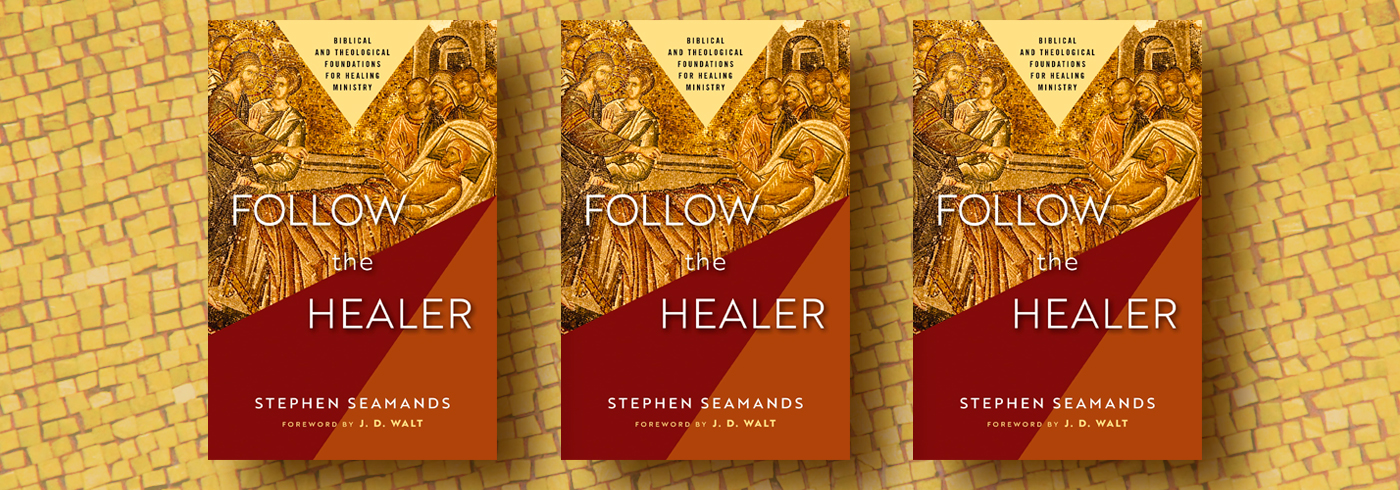Agents of Healing
Review of "Follow the Healer" by Stephen Seamands
Not only is healing a tenet of the Pentecostal faith, but it is also part of the Church’s redemptive mission, according to Stephen Seamands, author of Follow the Healer.
As Seamands puts it, “The church of Jesus Christ is the primary agency of healing in the world.”
Emeritus professor of Christian doctrine at Asbury Theological Seminary in Wilmore, Kentucky, Seamands sees Jesus’ ministry through a lens of healing. For this reason, he assumes healing is part of the Church, rather than defending it as a doctrine. In simple terms, following Jesus means following the Healer.
Seamands does provide a biblical and theological rationale for his view, along with sage advice from decades of local church ministry.
Emphasizing Jesus is the Healer, not us, Seamands says the Church’s role is about “joining him as he continues his healing ministry.”
More than just a demonstration of power, healing in the Gospels point to Christ’s love. Matthew 14:14 says, “When Jesus landed and saw a large crowd, he had compassion on them and healed their sick.”
“The healing power of Jesus is an expression of his love — love that cares deeply about the immediate, felt needs of hurting, broken people,” Seamands writes.
This calls for a compassionate approach to healing that protects the safety and dignity of people. Compassionate leaders refrain from careless speculation about the causes of sickness or why some individuals receive immediate healing while others do not. Ministering to the spiritual, emotional and physical needs of people should always be our primary concern.
“The healing power of Jesus is an expression of his love — love that cares deeply about the immediate, felt needs of hurting, broken people.” —Stephen Seamands
In a chapter titled “Five Ways Jesus Heals,” Seamands presents a holistic theology of healing. This chapter moves beyond a strictly supernatural paradigm to consider other ways God heals, including through medicine, biological processes, suffering, and victorious dying.
Without minimizing supernatural healing, Seamands argues these other experiences are no less Christian. For example, the Church has long played a role in providing medical care around the world. And the human body’s remarkable capacity for healing is part of God’s creative work.
Addressing suffering, Seamands points out that God’s power is present amid weakness when supernatural deliverance does not come (2 Corinthians 12:9). He says, “What a truly wonderful miracle of healing it is when we see people bearing suffering with patience through God’s grace.”
Beyond temporal forms of healing, facing the reality of death reminds Christians of our eternal future. Christians anticipate a final healing, looking forward to a day when there will be no more sickness or pain.
One of the most helpful parts of this book was its emphasis on the Holy Spirit’s role in ministering to the whole person — spiritually, socially, physically, and emotionally. When ministering to others, Seamands says, “we should be praying and asking the Holy Spirit to reveal what might be going on in each of these areas.”
Seamands holds healing in proper tension, acknowledging that Jesus preached the Kingdom as both a present and future reality. Thus, healing ministry occupies what Seamands calls the “radical middle,” where our expectation of the now is always subject to the not yet.
Regarding cessationism, the belief that healing and miracles have ceased, Seamands rightfully notes this is a waning position in the Church. While affirming healing is for today, Seamands adds that we must yield to God’s sovereignty — making space for the “ambiguities and mysteries” that entails.
Rather than running from questions, Seamands challenges readers to embrace the mystery — remaining humble and dependent on God.
Follow the Healer is a readable volume on a topic of interest to many Christians. It offers practical advice to help church leaders minister with love, wisdom and compassion. Seamands roots all of this in Christ’s character and the Spirit’s work in the believer.
In the final chapter, Seamands shares his own “Spirit-filled” experience, which he says has guided his healing ministry and academic career. While it is unclear whether Seamands fits the definition of a charismatic believer, his book — with its emphasis on the Holy Spirit and Jesus’ healing work — would be at home in Pentecostal and charismatic settings.
I recommend this book for ministers, lay leaders, and anyone interested in following the Healer.
Book Reviewed
Stephen Seamands, Follow the Healer: Biblical and Theological Foundations for Healing Ministry (Grand Rapids, MI: Zondervan Reflective, 2023).
This review appears in the winter 2024 issue of Influence magazine.
Influence Magazine & The Healthy Church Network
© 2025 Assemblies of God

